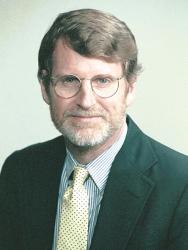Abstract
Old-age income protection is provided in nearly all wealthy democracies by
publicly funded defined-benefit pensions. The budgetary challenges facing public
pensions have forced policy makers to consider private alternatives to these
traditional systems. This paper considers the shortcomings of private saving
arrangements in duplicating the advantages of public pensions. Some of the
shortcomings can be overcome through the introduction of compulsory elements
into private saving plans. For example, worker contributions into such plans can
be mandatory, some or all worker accumulations in the plans can be forcibly
converted to annuities at retirement, and workers’ investment choices can be
narrowly circumscribed to a small menu of carefully designed, safe alternatives.
These measures unfortunately do not eliminate the biggest weakness of private
saving plans. Wide fluctuations in asset prices and returns make it hard for even
well-informed savers to select an affordable saving rate and an investment
strategy guaranteed to produce a decent income in old age. Public pension
systems partly insulate workers against economic and financial market risks by
sharing these risks across workers, retirees, and taxpayers in multiple generations
Introduction
The recent financial crisis should give pause to critics of public old-age
pensions. Many of the harshest critics of public pensions believe these programs
for assuring old-age income security should be jettisoned, in whole or in part, and
replaced with a system of private retirement savings accounts. The crisis
highlighted the risks facing workers and retirees who rely solely on private
savings to fund their retirements. Savers who invested heavily in equities and
corporate bonds experienced extraordinary losses in the value of their portfolios.
In rich industrialized countries equity prices fell 40% or more in 2008, wiping
out a decade of investor returns. The value of assets held in pension funds
plunged (see Figure 1). As the financial crisis demonstrated, old-age income
provided under a purely private retirement savings system is highly variable from
one year to the next unless workers invest in a very conservative portfolio.
Optimistic estimates of workers’ expected returns under a purely private
retirement system nearly always assume that workers will hold a sizeable
percentage of their portfolios in risky assets, such as equities or private bonds. If
retirement savers accept the risk associated with this kind of portfolio their
pensions are highly unpredictable. This will be true even under optimistic
assumptions about their sagacity and self-discipline in maintaining a prudent
investment strategy. Considerable evidence suggests that many if not most
retirement savers are far less well-informed and self-disciplined than assumed in
the standard economic model, implying that the risk-adjusted returns actually
obtained by workers who invest their own funds will often fall short of the
theoretical returns implied by common calculations.
One reason policymakers have been considering a shift toward private
pension accounts is that public pension systems face sizeable problems of their
own. In most rich democracies population aging has been a major impetus for
reform. The projected budget costs associated with an older population are so
large that governments in rich nations have been forced to consider a major
overhaul in the structure of their pension systems. With few exceptions, their old
systems were based on pay-as-you-go, tax-financed funding of publicly organized
defined-benefit (DB) pensions. The tax burden of this kind of system was
acceptable when their retired population represented a small fraction of the
population of working, contributing tax payers. The tax burden appeared less
tolerable when average pensions began to replace a large percentage of average
wages and the population receiving full pensions grew to be a large fraction of the
active workforce.
In the past two decades policymakers in a number of rich countries have
shown interest in following the example of Chile, which in the early 1980s
replaced its public, pay-as-you-go pension system with a private system
organized around individual investment accounts. Advocates of this kind of
reform point to Chile’s success in introducing a private account system to replace
a failing and under-funded public system, a system the government began
phasing out in the early 1980s. In the past three decades, Chile’s private pension
system has received high marks for sound administration, good returns, and
broad political acceptance. (It has, however, received lower marks because of
major holes in workforce coverage.) The expected surge in public retirement
costs in rich industrialized countries has made many economists and some
policymakers receptive to the idea of a Chilean-style private substitute or
supplement to existing unfunded public systems.
The question I pose in this paper is whether improvements in workers’
financial market access can serve as a substitute for the kind of social protection
provided by traditional public retirement systems. I interpret these
“improvements” to involve new kinds of financial instruments, ones different
from those available to ordinary workers in the past. In particular, the new
instruments would be suitable retirement saving vehicles for ordinary mortals as
opposed to the ideal, far-sighted and well-informed investors assumed in most
economic text books. The new instruments would expose workers to less risk
than investment alternatives available in the past, and they would offer workers
better assurance that their private savings could sustain them through a
retirement of unknown duration. Because the new instruments would be private,
however, there would be little scope for redistribution in favor of workers with
low lifetime earnings. Redistribution in favor of low-wage or other kinds of
disadvantaged workers would have to take place outside these purely private
financial instruments.
The Brookings Institution is committed to quality, independence, and impact.
We are supported by a diverse array of funders. In line with our values and policies, each Brookings publication represents the sole views of its author(s).



